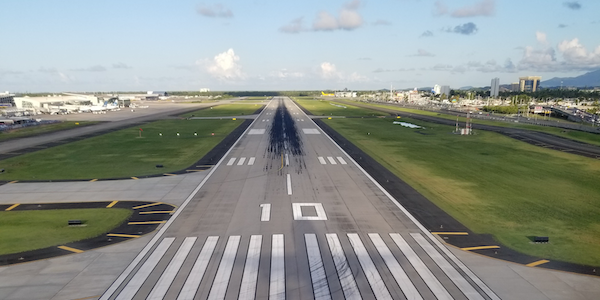Having problems with landings (and takeoffs for that matter)? It doesn’t matter if you’ve got 1 hour of total time or a 10000 hour ATP — not all of our landings can be greasers! One main problem we all have is consistently maintaining the centerline. I’ve put together a top ten list of items I watch out for when flying with students. Use these tips to keep you from bending metal or cracking carbon fiber!
- Overflaring: If the nose is too high because the roundout was started too early, continuing to pull will result in loss of forward vision. If you can’t see forward, you may not notice a drift developing. And you can’t fix what you can’t see!
- Misinterpretation: Reading a windsock requires a bit of mental gymnastics. Seeing the object to the right (or left) may cause a brief misinterpretation of where the wind is coming from, leading to improper control inputs. Best to go-around.
- Old Information: ATIS reports may be a couple of hours old, and even an AWOS is an average value over the last couple of minutes. Anticipating a wind correction during a no-wind condition may lead you off the side of the runway. If you detect a drift, eliminate the drift.
- Mechanical Turbulence: This is just a technical term for a structure changing the wind in your immediate vicinity. If a strong crosswind is blocked by a hangar as you’re in the flare, the airplane may start to drift suddenly.
- Side-Slip: You’re either doing too much or not enough to compensate for the wind. Side-slips are normally used to counter crosswinds. It’s a very active time for the pilot, varying the amount of rudder and aileron inputs. Practice, practice, practice… because no 2 landings are the same.
- Tailwheel: Solo seat in a J-3 Cub is the back seat, meaning there’s about 7 feet of nose in front of you sitting at a 15 degree angle blocking your view on landing! Don’t worry about what you can’t see, use what you can! Move your eyes left and right to keep equal amounts of asphalt on the sides of the airplane.
- Resignation: As an instructor… I’ve seen some stuff. Watch out for the student who just gives up in the last 10 feet. It happens. They exist. The nice ones will have the common courtesy to at least say, “Your flight controls!”
- Parallax: Fancy word for off-center view. Most training airplanes are side-by-side seating, which means neither pilot is on the longitudinal axis where the centerline should be. If it looks like you’re on centerline landing these airplanes… you’re not.
- What’s the Centerline?: If you’re really new to airplanes, there’s a temptation to stay in your lane like a car. But think of taxiways and runways as “one way” streets. Go right down the middle. They even painted solid and dashed lines down them to make it easy.
- You’re Just Not That Good Yet: Don’t worry! We all started there. But very early on, aim to be on centerline and don’t drop that standard for the rest of your flying career. Centerline is the safest place to be, as it grants maximum clearance from obstructions and runway edges.
So there you have it! The top ten culprits for landing off centerline. Go forth and get that training! If you’d like more information, Spread Aviation is available to provide in-aircraft flight instruction. Be the first to show me those coordination skills and I may just utter, “Nice Footwork!”

